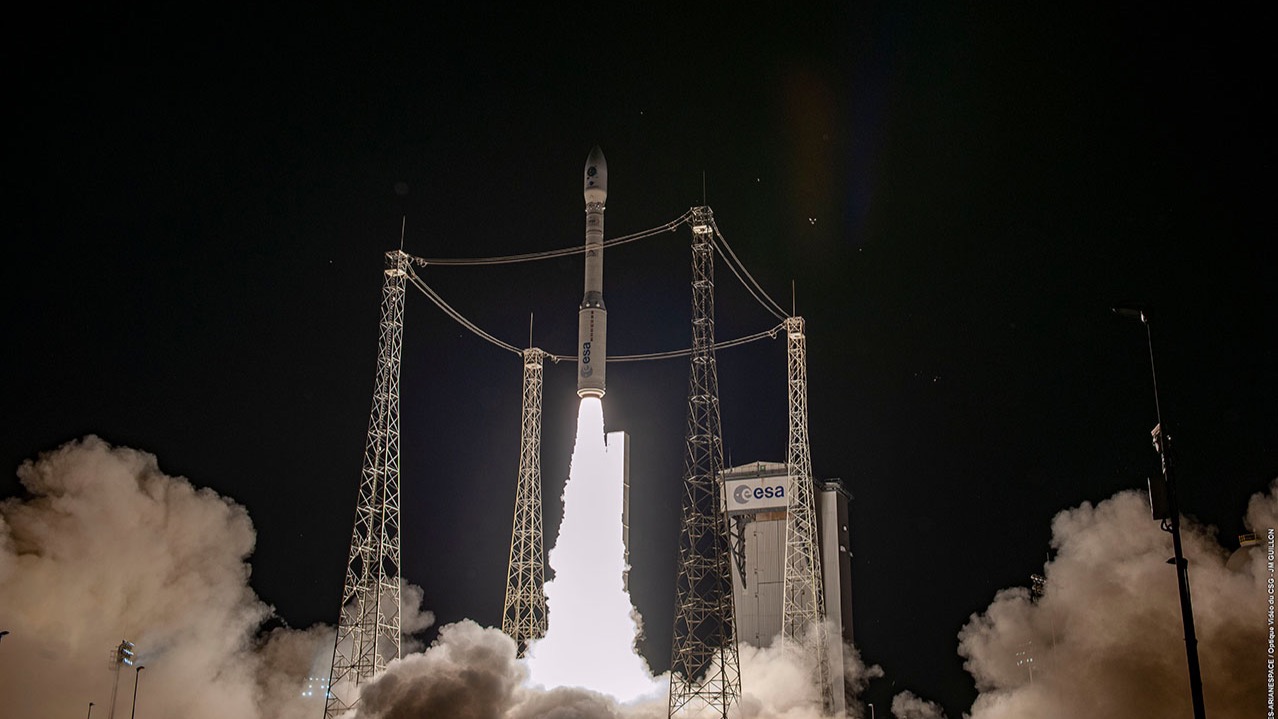
Avio, the company that builds ESA‘s Vega launcher, lost a pair of tanks for the AVUM fourth stage. While the company eventually found them, they were no longer useable, leading to a scramble to save the final Vega launch.
Avio loses final Vega tanks
According to European Spaceflight, Avio, who operates the Vega and Vega C rockets, lost a pair a tanks used in the AVUM fourth stage. This stage was intended for the final Vega rocket launch in early 2024.
According to a source, the tanks were not entered into the company wide asset management system, which made tracking them down nearly impossible. However, they were tracked down to a scrap yard, where they were crushed and stored with scrap metal, unusable for spaceflight.
The tanks were lost after renovation work was done in a production facility they were being stored at. Avio isn’t sure when the tanks went missing, or why they were deemed scrappable.
The AVUM stage uses four spherical tanks that are filled with hypergolic propellent to power the Ukrainian RD-869 engine. This was the final AVUM stage built as the Vega production lines have all been shut down with the rocket’s retirement coming after this next flight.
Originally slated to fly ESA’s Biomass Earth observation satellite, but was sometime in the past switched to fly the Sentinel 2C Earth observation satellite. Both extremely expensive satellites to risk anything but a proven launch system.
Join our Discord Server: Join the community with forums and chatrooms about space!
Why not just move it to Vega C?
Avio is still working on how to salvage the final flight of its Vega rocket. With no way of getting new tanks, the only option to continue with the plan of using the AVUM stage is by using test tanks used to qualify the stage over 10 years ago.
Four of those tanks remain. The plan would be to use two tanks to requalify them for spaceflight and the other two for flight. However, there is no way of knowing what sort of structural damage could be inside the tanks. So even if the two qualifying tanks work, the two flight tanks could still fail.
The second option, and the current one Avio is pursuing, is to modify the AVUM stage with parts of the new AVUM+ stage used by Vega C. Again, with no real way of knowing this new stage will even work in flight.
A third option? Well with any chance of this mission flying in early 2024 gone, maybe a push to Vega C is just the simplest solution? Vega C is Avio’s bigger sibling to the original Vega rocket. More capable and cost effective, it serves as the small-medium launcher for ESA.
The problem with that? Well the second launch of the Vega C failed due to an engine nozzle insert on the second stage. The next flight of Vega C is slated for no earlier than late 2024. So Sentinel 2C might be waiting another year to fly in this solution.
This is a unwinnable scenario Avio is in. No matter what path they choose, there is either an extreme level of risk to the mission’s success or long delays to getting the payload in space.
FTC: We use income earning auto affiliate links. More.



Comments